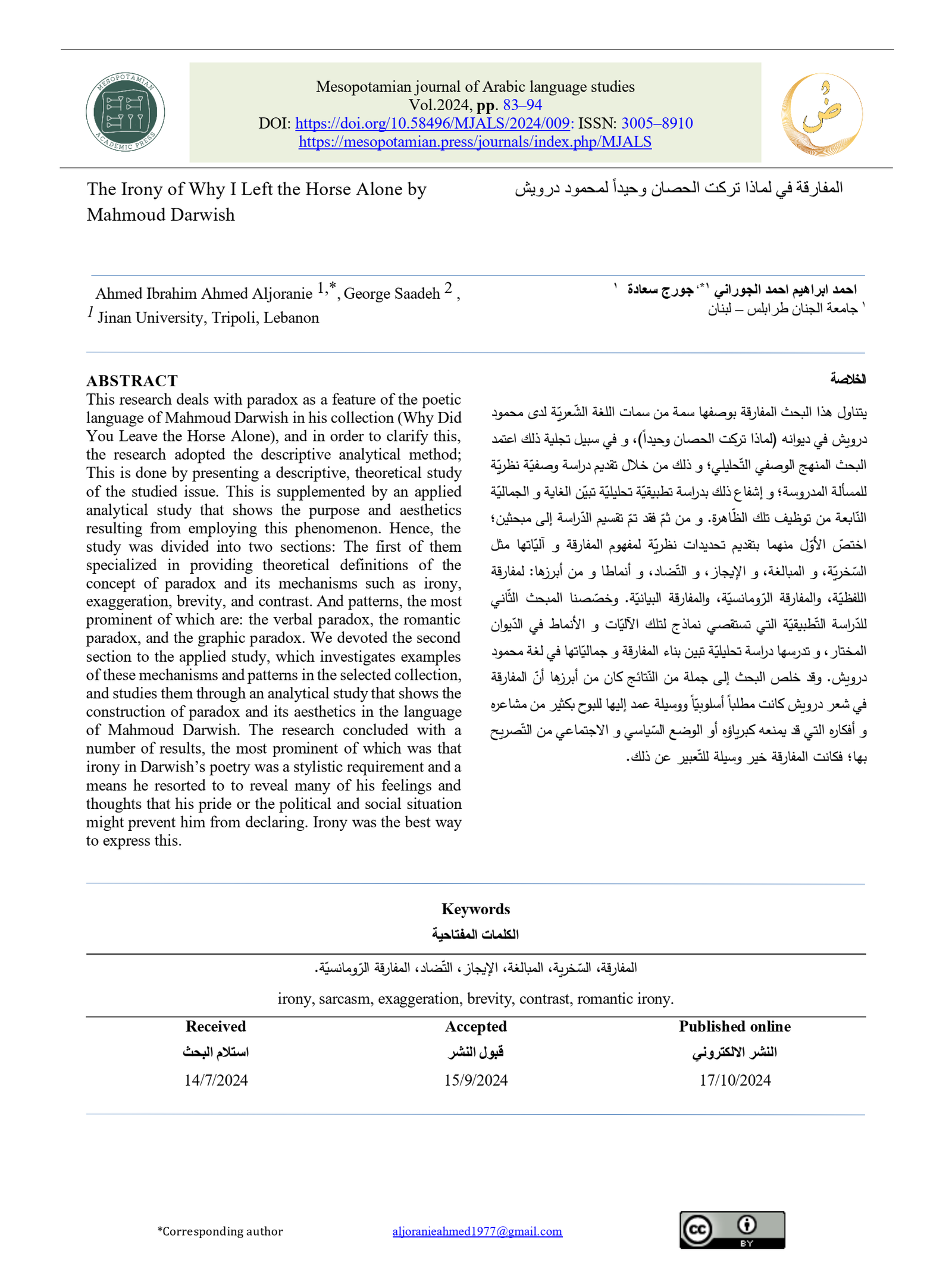The Irony of Why I Left the Horse Alone by Mahmoud Darwish
Main Article Content
Abstract
This research deals with paradox as a feature of the poetic language of Mahmoud Darwish in his collection (Why Did You Leave the Horse Alone), and in order to clarify this, the research adopted the descriptive analytical method; This is done by presenting a descriptive, theoretical study of the studied issue. This is supplemented by an applied analytical study that shows the purpose and aesthetics resulting from employing this phenomenon. Hence, the study was divided into two sections: The first of them specialized in providing theoretical definitions of the concept of paradox and its mechanisms such as irony, exaggeration, brevity, and contrast. And patterns, the most prominent of which are: the verbal paradox, the romantic paradox, and the graphic paradox. We devoted the second section to the applied study, which investigates examples of these mechanisms and patterns in the selected collection, and studies them through an analytical study that shows the construction of paradox and its aesthetics in the language of Mahmoud Darwish. The research concluded with a number of results, the most prominent of which was that irony in Darwish’s poetry was a stylistic requirement and a means he resorted to to reveal many of his feelings and thoughts that his pride or the political and social situation might prevent him from declaring. Irony was the best way to express this.
Article Details
Issue
Section

This work is licensed under a Creative Commons Attribution 4.0 International License.
